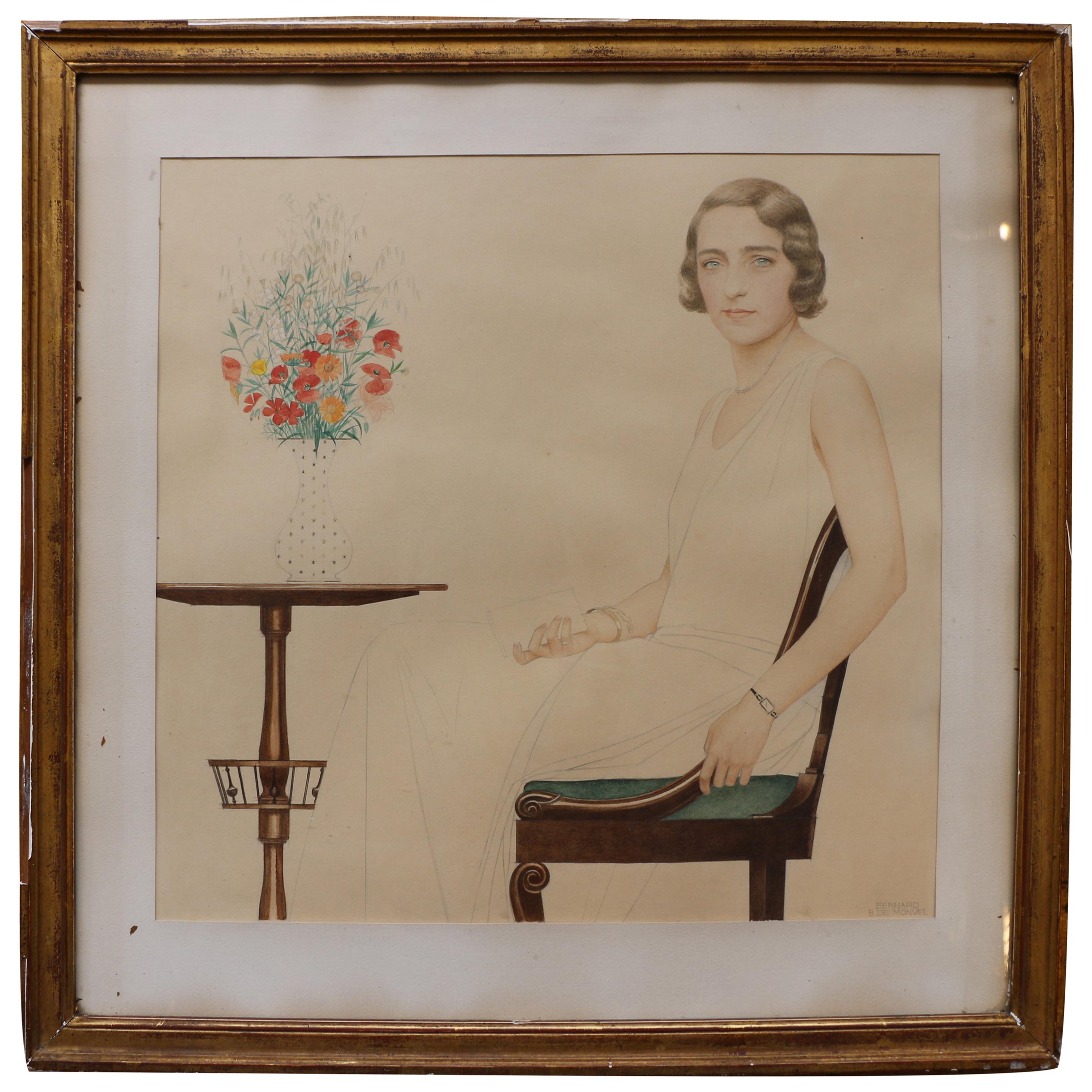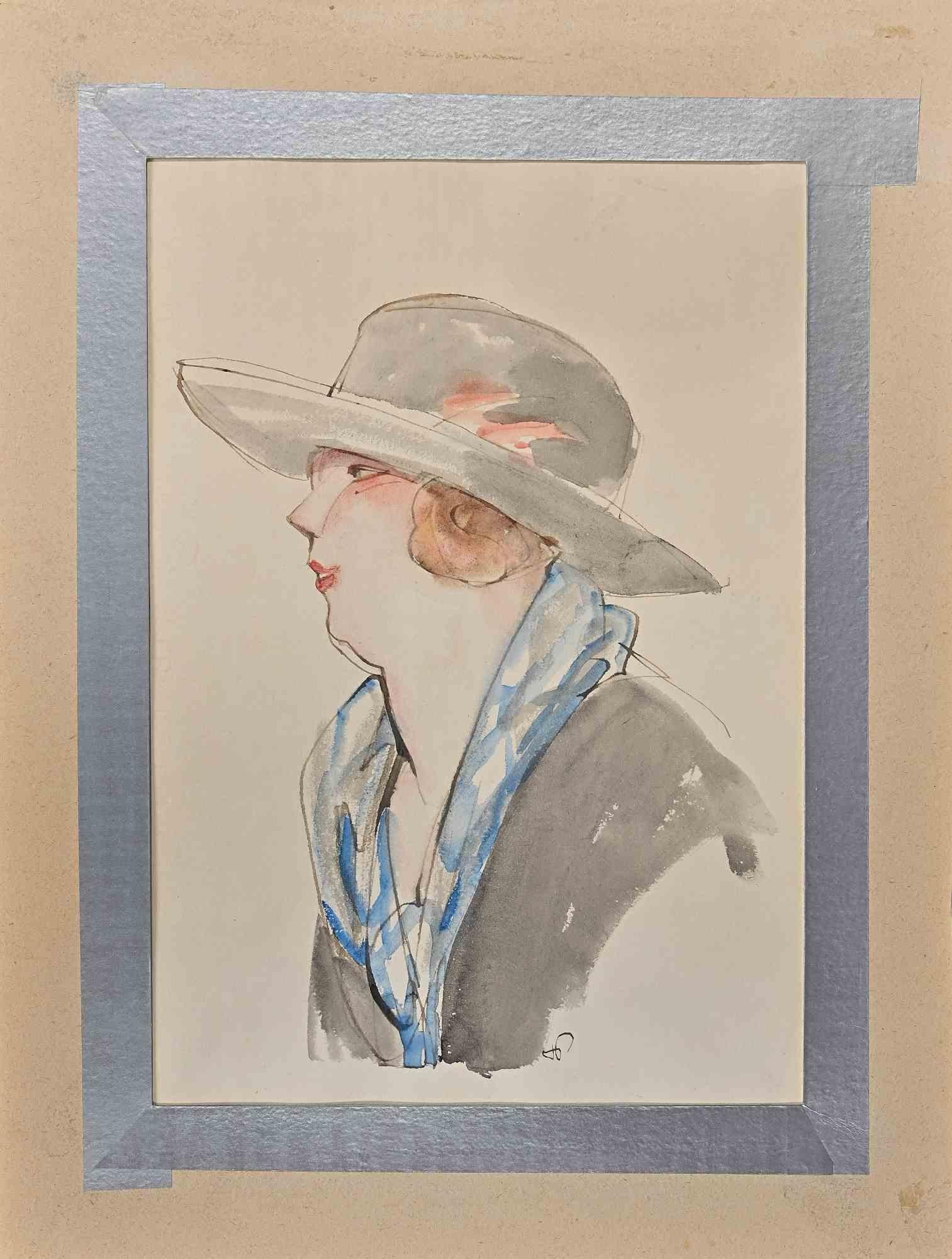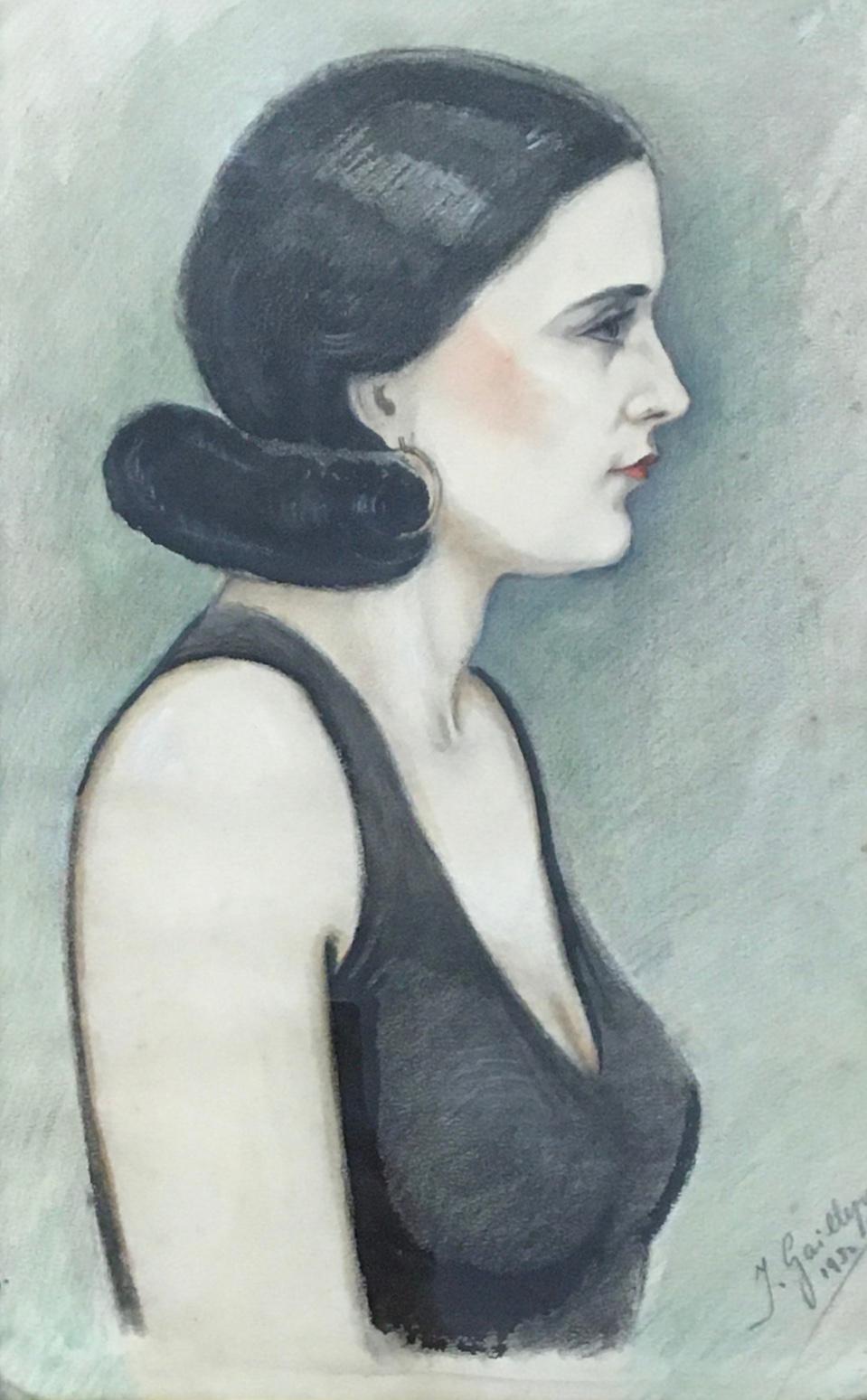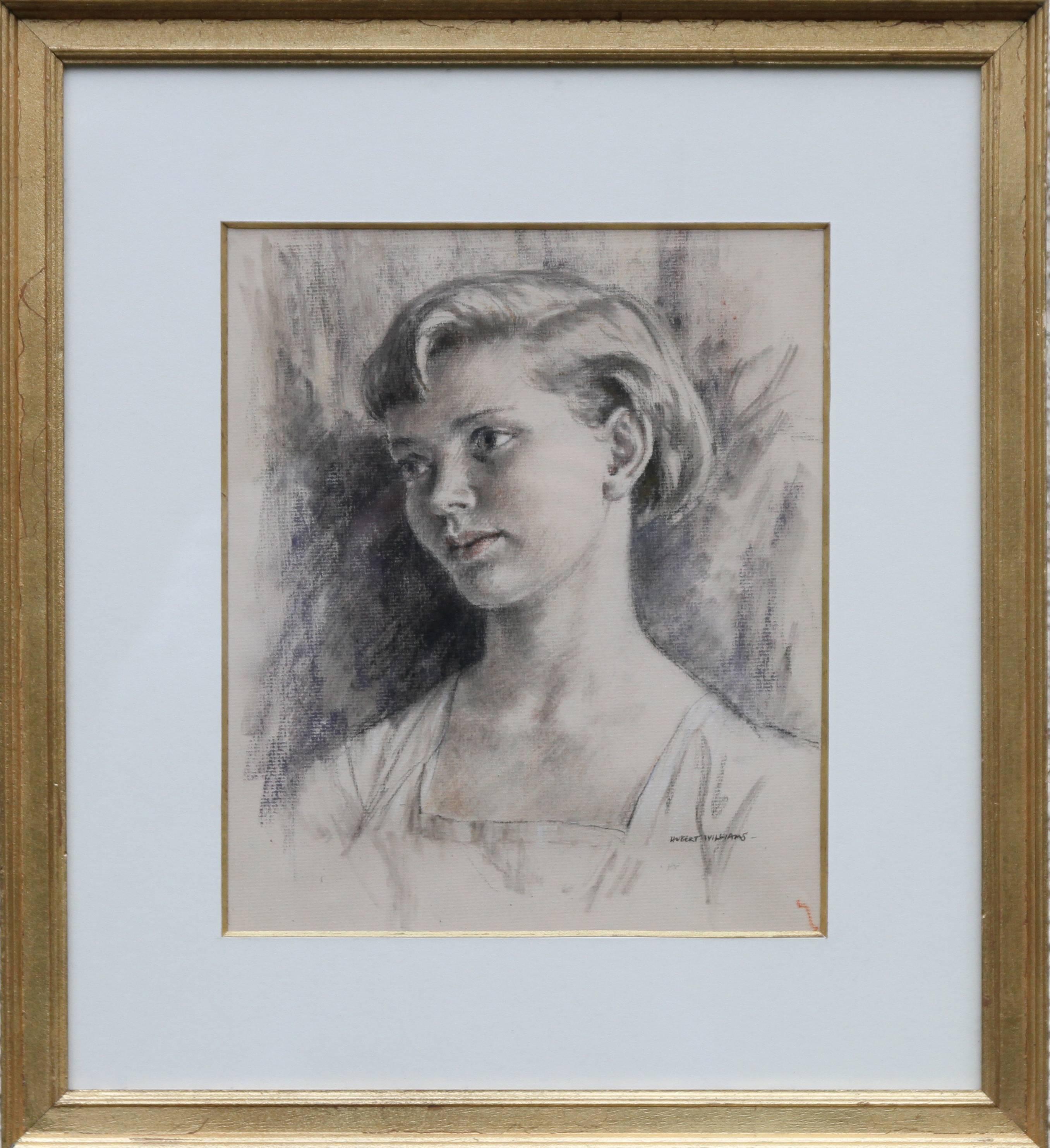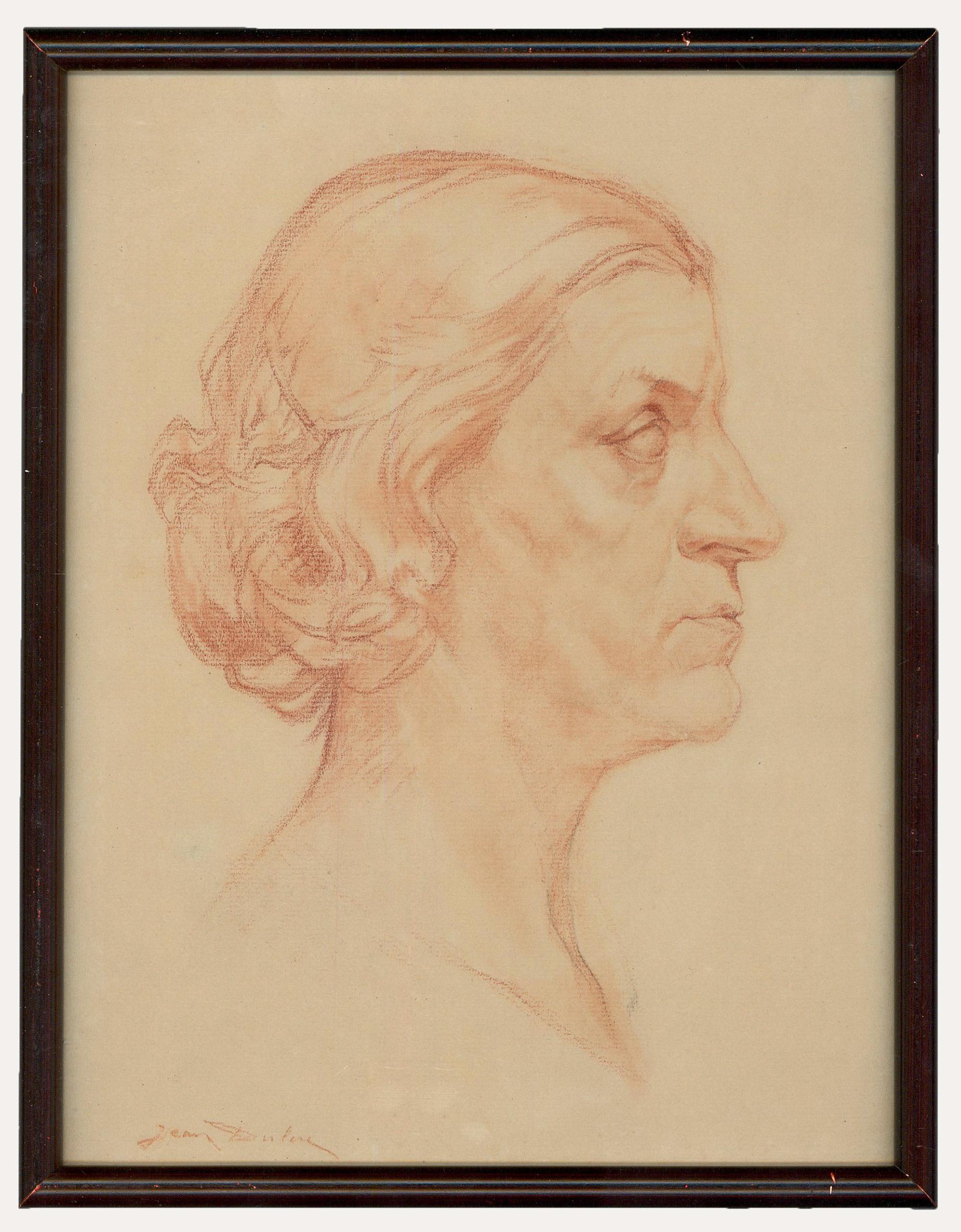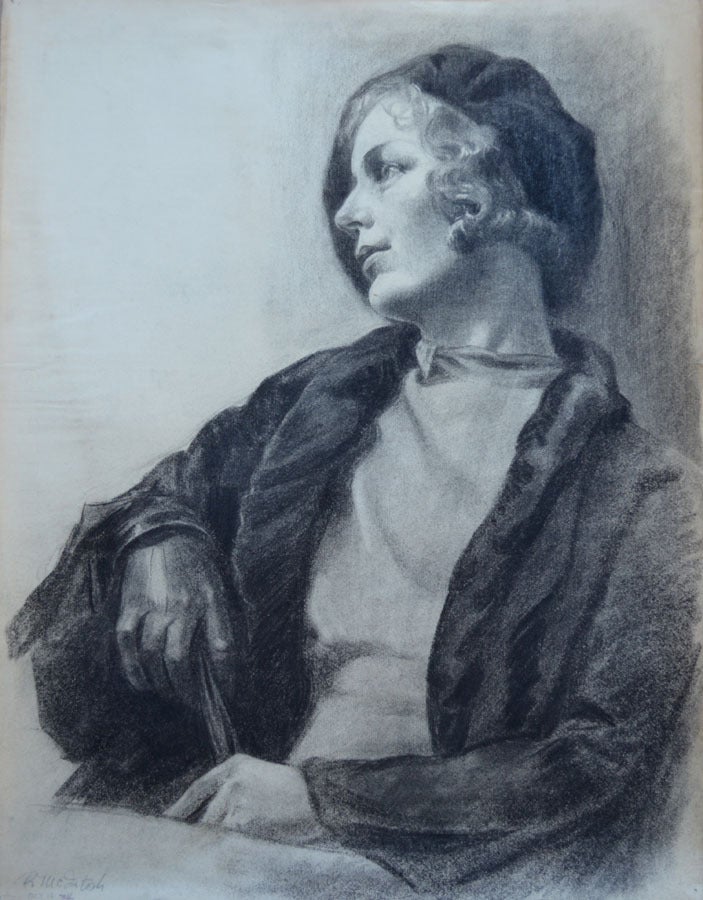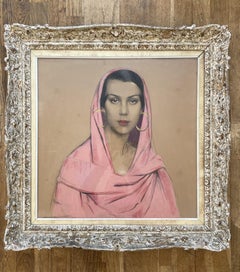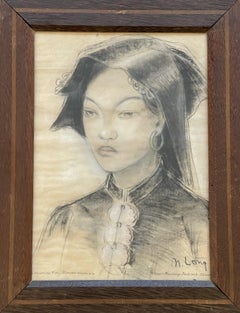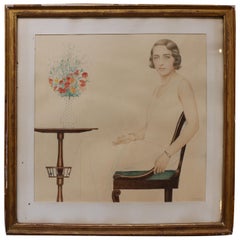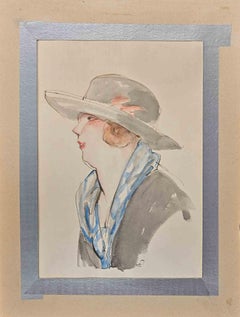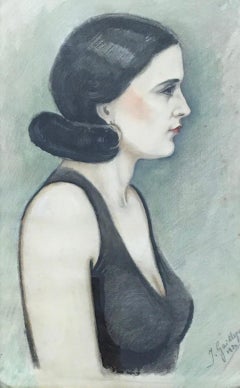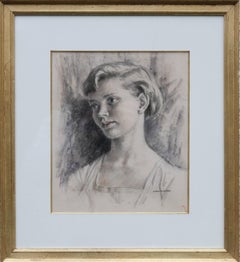Items Similar to Bernard BOUTET DE MONVEL (1881 - 1949), "Portrait of Miss Lise Brissaud"
Want more images or videos?
Request additional images or videos from the seller
1 of 15
Bernard Boutet de MonvelBernard BOUTET DE MONVEL (1881 - 1949), "Portrait of Miss Lise Brissaud"Circa 1928
Circa 1928
$29,482.70
£22,068.54
€25,000
CA$40,576.60
A$45,226.85
CHF 23,728.97
MX$552,293.52
NOK 300,460.41
SEK 283,980.79
DKK 190,317.61
About the Item
Bernard Boutet de Monvel was a French painter, sculptor, engraver, fashion illustrator and interior decorator. Although first known for his etchings, he earned notability for his paintings, especially his higly geometric views of New-York. In both Europe and the United States, where he often traveled, he also became known as a portrait painter for high society clients.
- Watercolor and black pencil on thick paper.
- Signed bottom right.
- The painting is the portrait of Ms Lise Brissaud whose family is described in the certificate.
- Accompanied by a certificate from M. Stéphane-Jacques Addade (expert at Chambre Européenne des Experts d'Art).
Dimensions
H: 44 cm W: 44 cm (unframed)
H: 66 cm W: 66 cm (framed)
H: 17.32 in W: 17.32 in (unframed)
H: 25.99 in W: 25.99 in (framed)
- Creator:Bernard Boutet de Monvel (1881 - 1949, French)
- Creation Year:Circa 1928
- Dimensions:Height: 17.33 in (44 cm)Width: 17.33 in (44 cm)
- Medium:
- Movement & Style:
- Period:
- Condition:
- Gallery Location:Paris, FR
- Reference Number:Seller: 2771stDibs: LU2791215254962
About the Seller
No Reviews Yet
Vetted Professional Seller
Every seller passes strict standards for authenticity and reliability
1stDibs seller since 2024
- ShippingRetrieving quote...Shipping from: Paris, France
- Return Policy
Authenticity Guarantee
In the unlikely event there’s an issue with an item’s authenticity, contact us within 1 year for a full refund. DetailsMoney-Back Guarantee
If your item is not as described, is damaged in transit, or does not arrive, contact us within 7 days for a full refund. Details24-Hour Cancellation
You have a 24-hour grace period in which to reconsider your purchase, with no questions asked.Vetted Professional Sellers
Our world-class sellers must adhere to strict standards for service and quality, maintaining the integrity of our listings.Price-Match Guarantee
If you find that a seller listed the same item for a lower price elsewhere, we’ll match it.Trusted Global Delivery
Our best-in-class carrier network provides specialized shipping options worldwide, including custom delivery.More From This Seller
View AllGustave BRISGAND (1867-1944), portrait of a woman wearing a veil
Located in Paris, FR
Gustave Brisgand (1867-1944) began his artistic career by focusing on landscapes. However, he later specialized in portraits of notable personalities, women, and female nudes. One of...
Category
1920s Art Deco Portrait Drawings and Watercolors
Materials
Paper, Chalk, Charcoal, Pastel
Marcel GROMAIRE (1892-1971), female nude
By Marcel Gromaire
Located in Paris, FR
Marcel Gromaire (1892 – 1971) was a French painter. He painted many works on social subjects and is often associated with Social Realism, but Gromaire can be said to have created an ...
Category
1950s French School Nude Drawings and Watercolors
Materials
Paper, Ink, Pen
N’Guyen PHAN LONG, pair of drawings on paper
Located in Paris, FR
- Price for both.
- Signed at the bottom right.
- Vietnam, 1946.
Dimensions
H : 33 cm L : 31 cm
H : 12.9 in W : 12.2 in
Category
1940s Art Deco Portrait Drawings and Watercolors
Materials
Paper, Charcoal, Watercolor
Léa LAFUGIE (1890-1972), watercolor of a "Ta Moc" woman and child
Located in Paris, FR
Léa Lafugie is a painter who has travelled extensively throughout Asia. She is renowned for her portraits. She studied at the Ecole des Arts Décoratifs in Paris, then at the Ecole de...
Category
1920s Figurative Drawings and Watercolors
Materials
Paper, Watercolor
"The opium smoker", Léa Lafugie (1890-1972)
Located in Paris, FR
Léa Lafugie (1890–1972) was a painter who traveled extensively across Asia. She was renowned for her portraits. She studied at the School of Decorative Arts, followed by the École de...
Category
1920s Modern Figurative Drawings and Watercolors
Materials
Watercolor
"Female Nude", Marcel Gromaire (1892-1971) attributed
By Marcel Gromaire
Located in Paris, FR
Marcel Gromaire (1892–1971) was a painter who left a significant mark on modern French art. He turned to painting after World War I, during which he served as a soldier. His wartime ...
Category
Mid-20th Century Modern Nude Paintings
Materials
Oil
You May Also Like
Bernard BOUTET DE MONVEL (1881 - 1949), Portrait of Miss Lise Brissaud
By Bernard Boutet de Monvel
Located in Paris, FR
Bernard Boutet de Monvel was a French painter, sculptor, engraver, fashion illustrator and interior decorator. Although first known for his etchings, he earn...
Category
Vintage 1920s French Art Deco Decorative Art
Materials
Paper
Portrait of a Lady - Drawing by Hermann Paul - Early 20th Century
Located in Roma, IT
Portrait of a Lady is a pencil, ink and watercolor drawing realized by Hermann Paul.
Hand signed on the lower right corner. Passpartout included cm 40.5x30.5
Good condition.
René ...
Category
Early 20th Century Modern Figurative Drawings and Watercolors
Materials
Paper, Ink, Watercolor, Pencil
Portrait of Miss Bachelard
Located in Genève, GE
Work on paper
Black wooden frame with glass pane
53 x 35 x 1.5 cm
Category
1930s Portrait Drawings and Watercolors
Materials
Pastel
Portrait of a Lady - British Art Deco 30's drawing young woman good provenance
By Hubert John Williams
Located in London, GB
A fine and detailed Art Deco pencil, black, red and white chalk portrait of a young woman by Hubert Williams. The work dates to circa 1930 and is very skilful in its execution. A bea...
Category
1930s Realist Portrait Drawings and Watercolors
Materials
Chalk, Color Pencil
Jean Dulac (1902-1968) - 1942 Watercolour, Portrait of D'Adrienne Dulac-Riche
Located in Corsham, GB
A charming portrait of a woman in profile. The artist captures her in watercolour and pastel. Signed to the lower right. Presented in a slim wooden frame. Titled and dated verso. On ...
Category
Mid-20th Century Portrait Drawings and Watercolors
Materials
Watercolor
$244 Sale Price
20% Off
Mademoiselle
By Robert McIntosh
Located in West Hollywood, CA
A rare, early original figurative charcoal by American artist Robert McIntosh(1916-2010)
Robert McIntosh was extremely prolific and exhibited throughout his lifetime, including fi...
Category
1930s Art Deco Figurative Drawings and Watercolors
Materials
Charcoal, Paper
Price Upon Request
More Ways To Browse
First World War
30 X 30 Painting
Paintings Of Shadows
Oil Paintings Of Homes
Acrylic Nature Painting
California Landscapes
All Flower Art
Water Light
New England Art
Rare Prints
Oil On Canvas New York
White Acrylic Painting
Vivid Painting
French Impressionist Painting
Vintage European Signs
Contemporary Still Life Painting
Artist Signed Book
Calming Art
